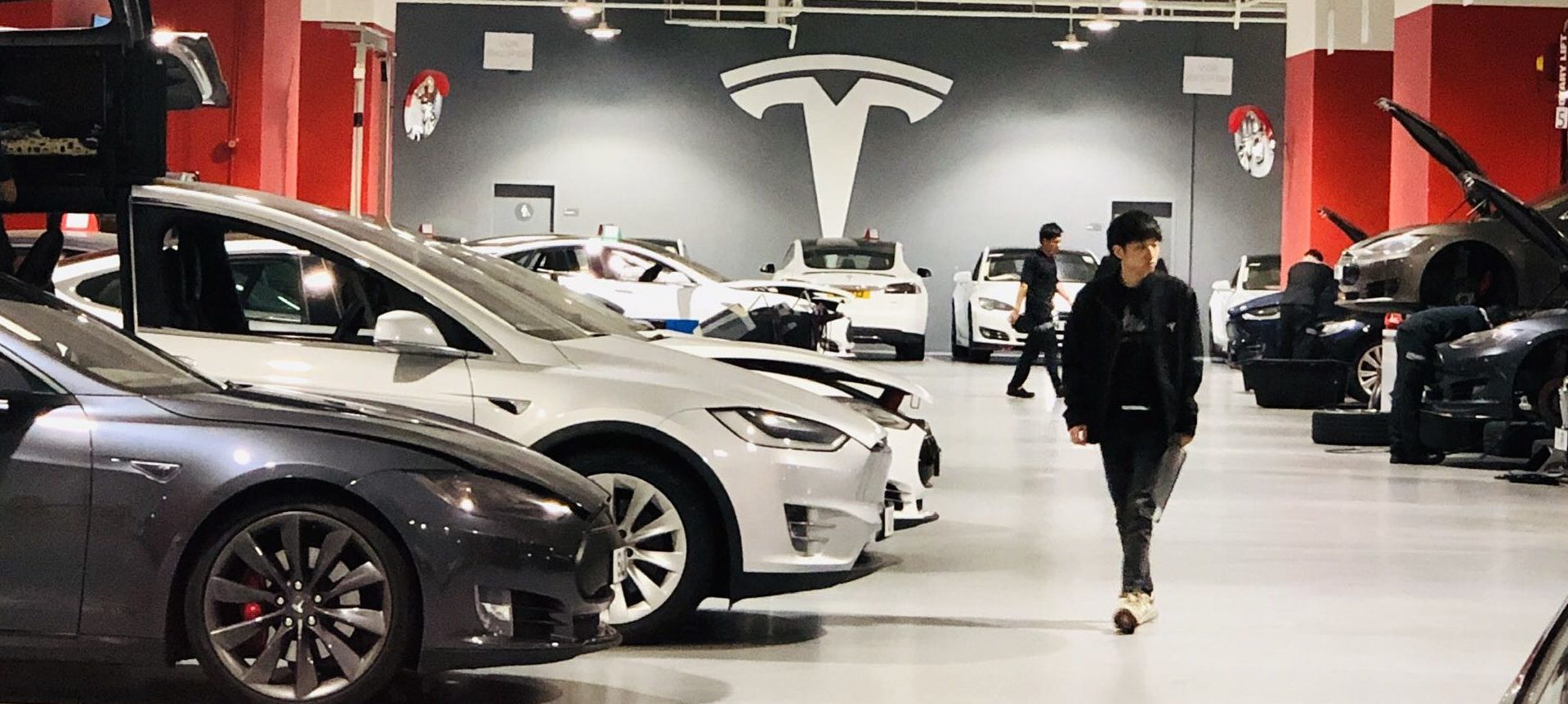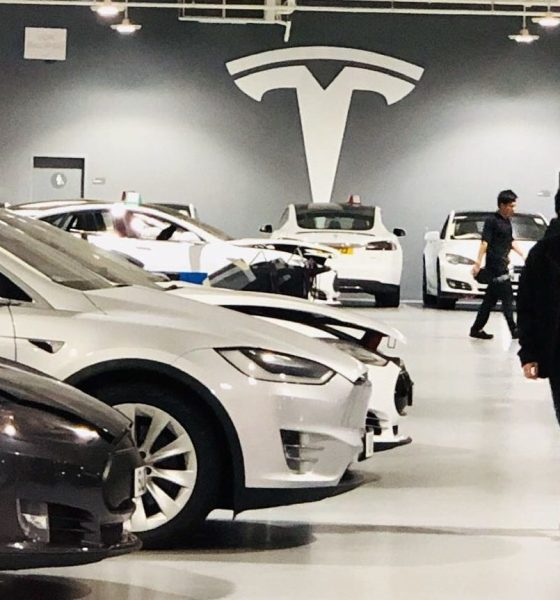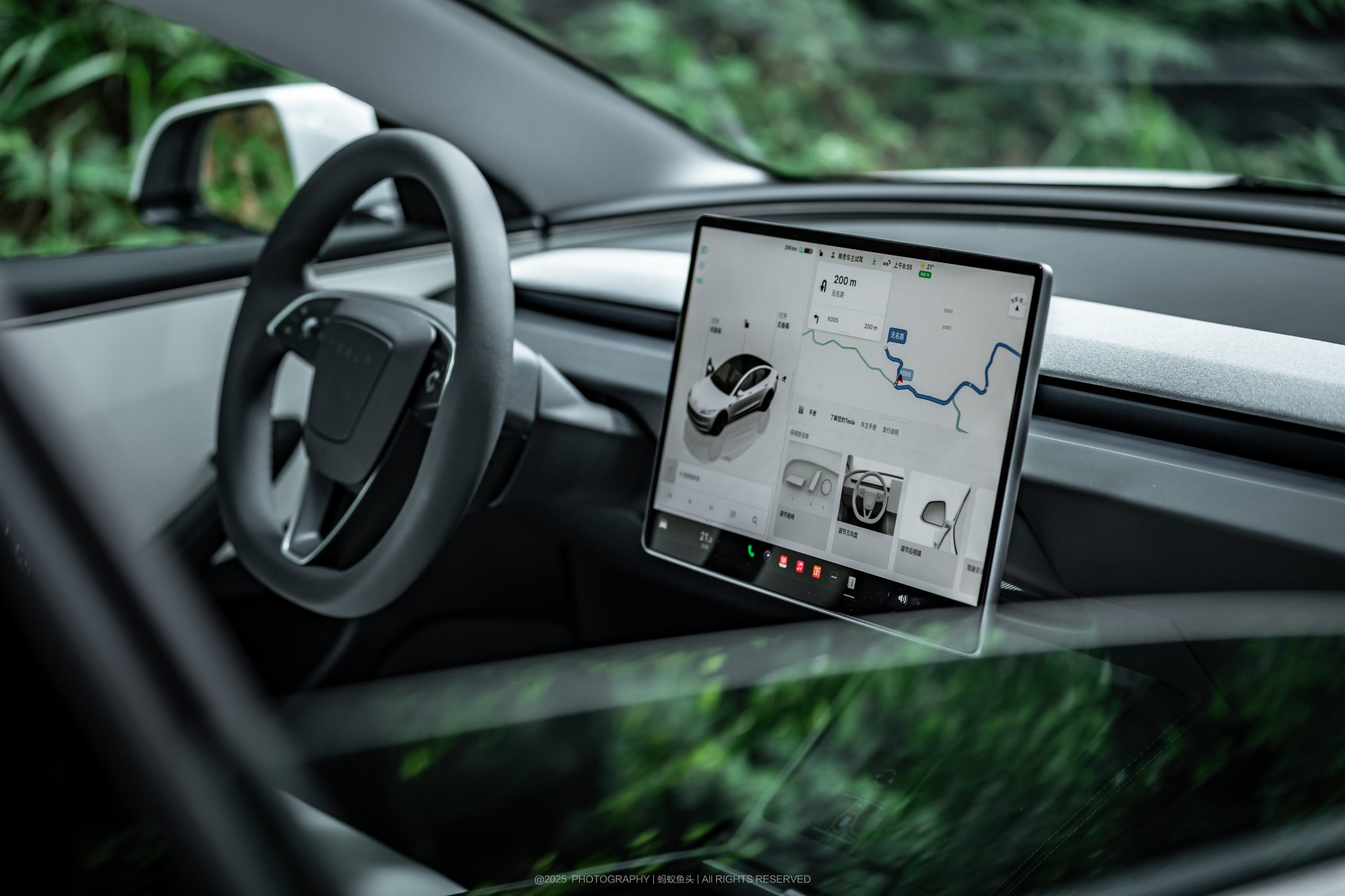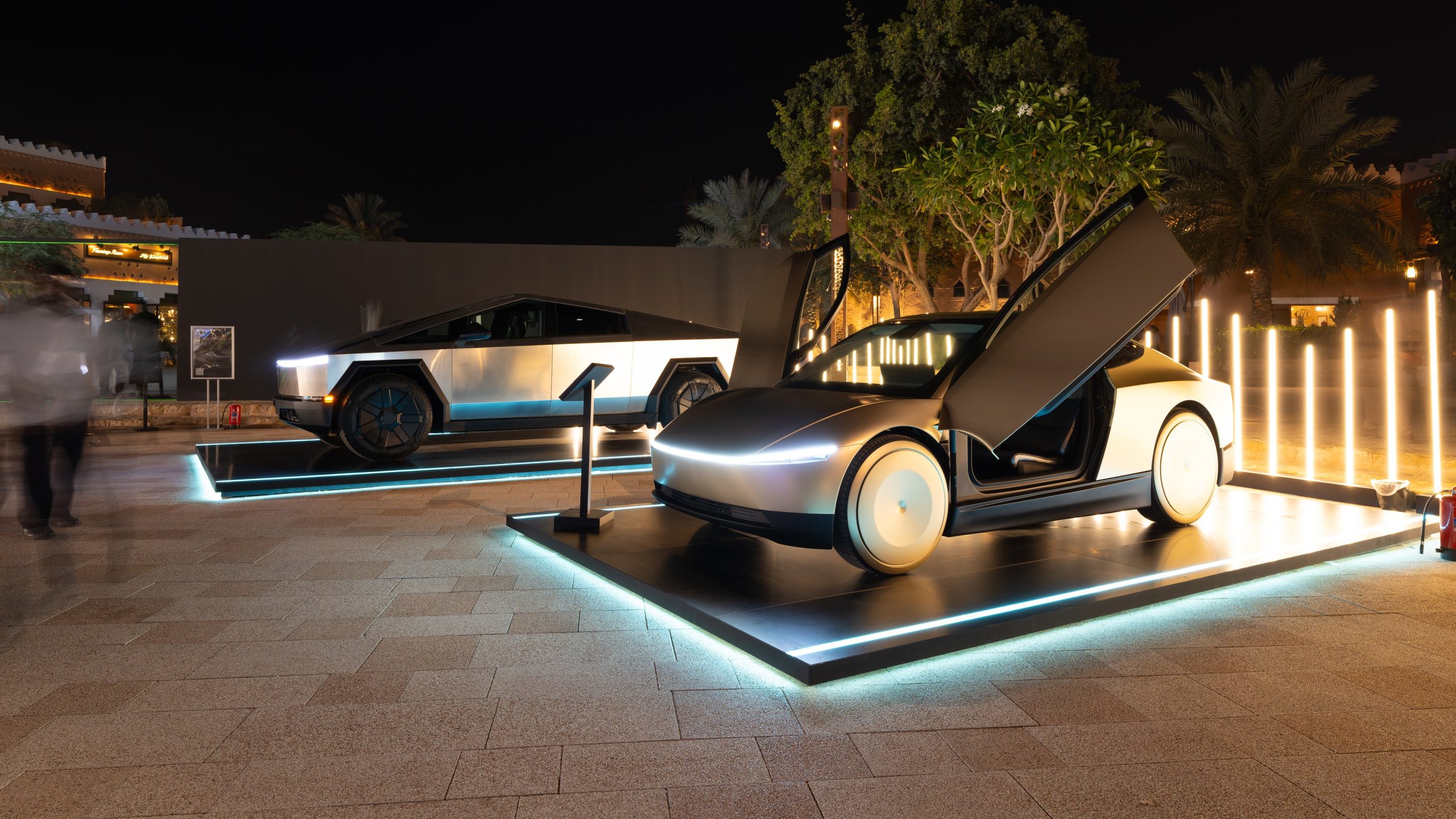

Investor's Corner
Tesla is addressing its repair service challenges by doubling capacity in 2019
As Tesla heads towards the mass market with vehicles like the Model 3 sedan and the upcoming Model Y SUV, the challenges of supporting an ever-growing fleet is becoming more and more evident. Over the past month, numerous Tesla owners, including influencers with large followings on social media, have brought up the issue of the company’s vehicle service problems. In its recent Update Letter and following earnings call, the electric car maker provided some insights into this issue.
Tesla stated that it is currently operating 378 service centers around the world by the end of the fourth quarter, with 300 of the sites being located outside of CA. Augmenting this support system is a fleet of 411 mobile service vehicles. While this might seem sufficient to provide service to the company’s Model S and Model X, these sites are quickly proving insufficient when faced with the company’s increasing sales and its ever-growing Model 3 fleet.
In 2018, for example, Tesla delivered 245,240 vehicles across the globe. This year, Tesla noted in its shareholder letter that it aims to increase vehicle deliveries to 360,000 to 400,000 worldwide — an increase of 45% to 65% compared to 2018’s already record-breaking numbers. With this in mind, there is a need for Tesla to ensure that its service capabilities are enough to support the company’s increasing number of vehicles.
During the recently held earnings call, Tesla noted that it would be rolling out vast improvements for its parts distribution systems. Elon Musk added that Tesla’s strategies for servicing vehicles have been pretty inadequate, at one point candidly describing the policies as “boneheaded.” Musk also noted that some of its service processes were “super dumb,” referring to a system where a part made in China gets shipped to the US, only to be sent back to China where they were ordered.
“We’re also improving parts distribution. I think we made a strategic error in the past about not having service parts located at our distribution centers. We had them in parts distribution warehouses which basically meant it was impossible to have a fast turnaround on service on your car because the car would come in, then the parts would be requested (before) they come to the service center. Basically, for even for a very simple repair, it could take days.
“We’re going to move to stocking all common parts at the service centers, so it’s possible to get your car service in 20 or possibly 15 minutes. Lightning fast. It’s also gonna make sense for our service centers to do basic bodywork or essentially if all you need to do is replace a front or rear feature, it makes sense to pre-stock the front-rear feature in the common colors. So unless you have (an) unusual color, we can literally replace your feature in 15-20 minutes, and there’s none of this like weeks at a body shop stuff.”
One thing that the company emphasized in the earnings call was the potential of its Tesla Rangers service, which sends certified mechanics to customers’ homes or offices to repair cars on the spot. Considering that the Rangers could address around 80% of repairs needed for Tesla’s electric cars, a serious ramp of the mobile service would likely result in an improvement for the company’s vehicle service systems.
In its Q4 2018 Update Letter, the company noted that its centers would be moving to two-shift operations in order to double the capacity of a site. Improvements to the Tesla app are also expected to make scheduling service an easy and seamless affair. Ultimately, these initiatives are expected to allow the electric car maker to vastly improve its capabilities to address its owners’ vehicle concerns.
Tesla’s areas for improvement in its service systems appear to be a notable topic for Elon Musk. In last year’s Annual Shareholder Meeting, Musk announced that Tesla is opening in-house body shops to reduce the time it takes for vehicles to be repaired. Tesla eventually launched several in-house repair centers across the United States, and the reception from the community has largely been positive. Model 3 owner and YouTube influencer Kim of Like Tesla, for one, shared her experience with one of the company’s in-house body shops, which was able to complete the repairs to her damaged vehicle in 24 hours.

Investor's Corner
SpaceX IPO is coming, CEO Elon Musk confirms
However, it appears Musk is ready for SpaceX to go public, as Ars Technica Senior Space Editor Eric Berger wrote an op-ed that indicated he thought SpaceX would go public soon. Musk replied, basically confirming it.

Elon Musk confirmed through a post on X that a SpaceX initial public offering (IPO) is on the way after hinting at it several times earlier this year.
It also comes one day after Bloomberg reported that SpaceX was aiming for a valuation of $1.5 trillion, adding that it wanted to raise $30 billion.
Musk has been transparent for most of the year that he wanted to try to figure out a way to get Tesla shareholders to invest in SpaceX, giving them access to the stock.
He has also recognized the issues of having a public stock, like litigation exposure, quarterly reporting pressures, and other inconveniences.
However, it appears Musk is ready for SpaceX to go public, as Ars Technica Senior Space Editor Eric Berger wrote an op-ed that indicated he thought SpaceX would go public soon.
Musk replied, basically confirming it:
As usual, Eric is accurate
— Elon Musk (@elonmusk) December 10, 2025
Berger believes the IPO would help support the need for $30 billion or more in capital needed to fund AI integration projects, such as space-based data centers and lunar satellite factories. Musk confirmed recently that SpaceX “will be doing” data centers in orbit.
AI appears to be a “key part” of SpaceX getting to Musk, Berger also wrote. When writing about whether or not Optimus is a viable project and product for the company, he says that none of that matters. Musk thinks it is, and that’s all that matters.
It seems like Musk has certainly mulled something this big for a very long time, and the idea of taking SpaceX public is not just likely; it is necessary for the company to get to Mars.
The details of when SpaceX will finally hit that public status are not known. Many of the reports that came out over the past few days indicate it would happen in 2026, so sooner rather than later.
But there are a lot of things on Musk’s plate early next year, especially with Cybercab production, the potential launch of Unsupervised Full Self-Driving, and the Roadster unveiling, all planned for Q1.
Investor's Corner
Tesla Full Self-Driving statistic impresses Wall Street firm: ‘Very close to unsupervised’
The data shows there was a significant jump in miles traveled between interventions as Tesla transitioned drivers to v14.1 back in October. The FSD Community Tracker saw a jump from 441 miles to over 9,200 miles, the most significant improvement in four years.

Tesla Full Self-Driving performance and statistics continue to impress everyone, from retail investors to Wall Street firms. However, one analyst believes Tesla’s driving suite is “very close” to achieving unsupervised self-driving.
On Tuesday, Piper Sandler analyst Alexander Potter said that Tesla’s recent launch of Full Self-Driving version 14 increased the number of miles traveled between interventions by a drastic margin, based on data compiled by a Full Self-Driving Community Tracker.
🚨 Piper Sandler reiterated its Overweight rating and $500 PT on Tesla $TSLA stock
Analyst Alexander Potter said FSD is near full autonomy and latest versions showed the largest improvement in disengagements, from 440 miles to 9,200 miles between critical interventions pic.twitter.com/u4WCLfZcA9
— TESLARATI (@Teslarati) December 9, 2025
The data shows there was a significant jump in miles traveled between interventions as Tesla transitioned drivers to v14.1 back in October. The FSD Community Tracker saw a jump from 441 miles to over 9,200 miles, the most significant improvement in four years.
Interestingly, there was a slight dip in the miles traveled between interventions with the release of v14.2. Piper Sandler said investor interest in FSD has increased.
Full Self-Driving has displayed several improvements with v14, including the introduction of Arrival Options that allow specific parking situations to be chosen by the driver prior to arriving at the destination. Owners can choose from Street Parking, Parking Garages, Parking Lots, Chargers, and Driveways.
Additionally, the overall improvements in performance from v13 have been evident through smoother operation, fewer mistakes during routine operation, and a more refined decision-making process.
Early versions of v14 exhibited stuttering and brake stabbing, but Tesla did a great job of confronting the issue and eliminating it altogether with the release of v14.2.
Tesla CEO Elon Musk also recently stated that the current v14.2 FSD suite is also less restrictive with drivers looking at their phones, which has caused some controversy within the community.
Although we tested it and found there were fewer nudges by the driver monitoring system to push eyes back to the road, we still would not recommend it due to laws and regulations.
Tesla Full Self-Driving v14.2.1 texting and driving: we tested it
With that being said, FSD is improving significantly with each larger rollout, and Musk believes the final piece of the puzzle will be unveiled with FSD v14.3, which could come later this year or early in 2026.
Piper Sandler reaffirmed its $500 price target on Tesla shares, as well as its ‘Overweight’ rating.
Investor's Corner
Tesla gets price target boost, but it’s not all sunshine and rainbows

Tesla received a price target boost from Morgan Stanley, according to a new note on Monday morning, but there is some considerable caution also being communicated over the next year or so.
Morgan Stanley analyst Andrew Percoco took over Tesla coverage for the firm from longtime bull Adam Jonas, who appears to be focusing on embodied AI stocks and no longer automotive.
Percoco took over and immediately adjusted the price target for Tesla from $410 to $425, and changed its rating on shares from ‘Overweight’ to ‘Equal Weight.’
Percoco said he believes Tesla is the leading company in terms of electric vehicles, manufacturing, renewable energy, and real-world AI, so it deserves a premium valuation. However, he admits the high expectations for the company could provide for a “choppy trading environment” for the next year.
He wrote:
“However, high expectations on the latter have brought the stock closer to fair valuation. While it is well understood that Tesla is more than an auto manufacturer, we expect a choppy trading environment for the TSLA shares over the next 12 months, as we see downside to estimates, while the catalysts for its non-auto businesses appear priced at current levels.”
Percoco also added that if market cap hurdles are achieved, Morgan Stanley would reduce its price target by 7 percent.
Perhaps the biggest change with Percoco taking over the analysis for Jonas is how he will determine the value of each individual project. For example, he believes Optimus is worth about $60 per share of equity value.
He went on to describe the potential value of Full Self-Driving, highlighting its importance to the Tesla valuation:
“Full Self Driving (FSD) is the crown jewel of Tesla’s auto business; we believe that its leading-edge personal autonomous driving offering is a real game changer, and will remain a significant competitive advantage over its EV and non-EV peers. As Tesla continues to improve its platform with increased levels of autonomy (i.e., hands-off, eyes-off), it will revolutionize the personal driving experience. It remains to be seen if others will be able to keep pace.”
Additionally, Percoco outlined both bear and bull cases for the stock. He believes $860 per share, “which could be in play in the next 12 months if Tesla manages through the EV-downturn,” while also scaling Robotaxi, executing on unsupervised FSD, and scaling Optimus, is in play for the bull case.
Will Tesla thrive without the EV tax credit? Five reasons why they might
Meanwhile, the bear case is placed at $145 per share, and “assumes greater competition and margin pressure across all business lines, embedding zero value for humanoids, slowing the growth curve for Tesla’s robotaxi fleet to reflect regulatory challenges in scaling a vision-only perception stack, and lowering market share and margin profile for the autos and energy businesses.”
Currently, Tesla shares are trading at around $441.








